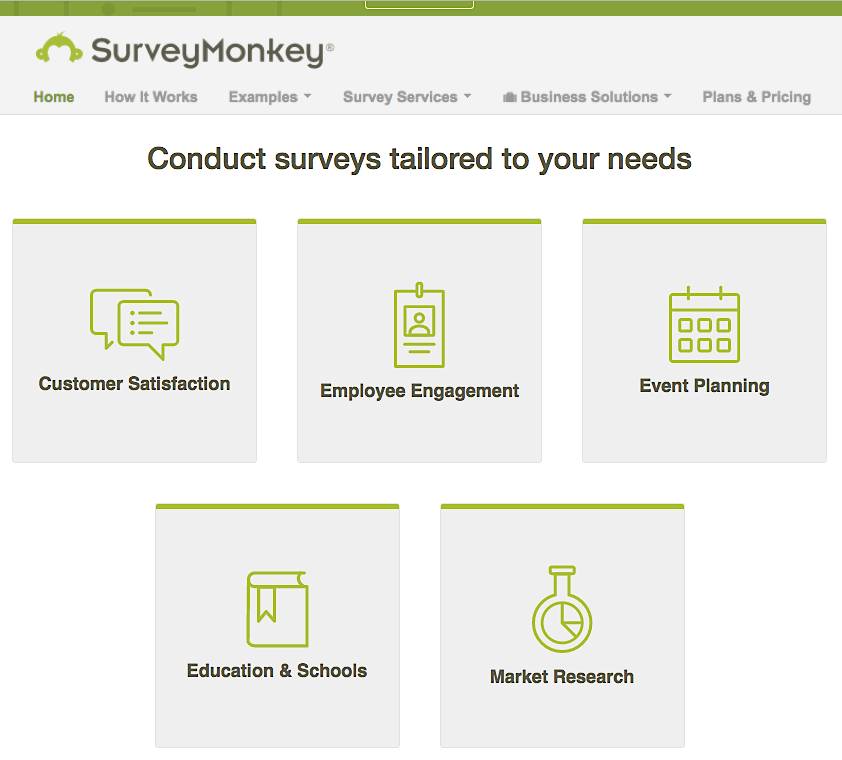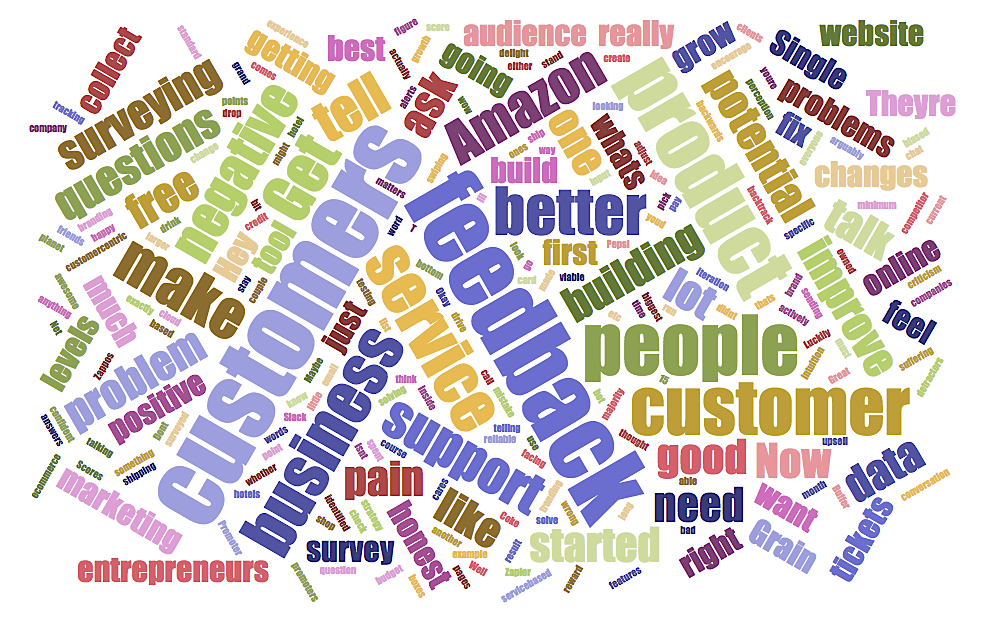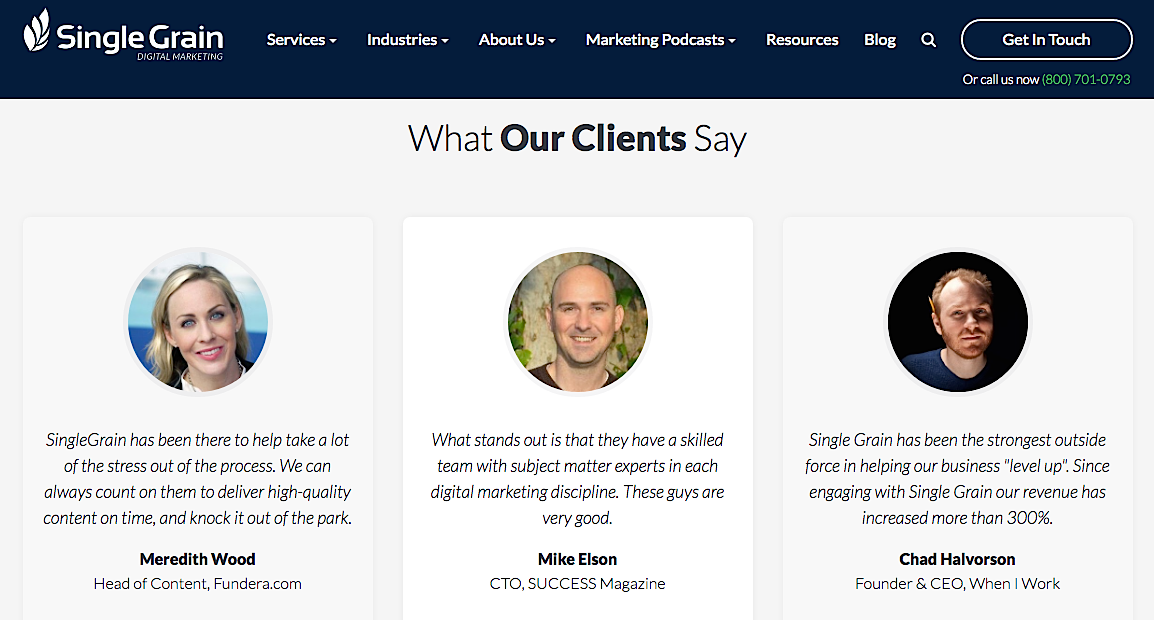So, why should you collect customer feedback and how do you do it effectively? I’m glad you asked.
First of all, customer feedback is just getting input from your existing customers as well as potential customers on how you can improve what’s good, how you can fix what’s bad, and what, overall, you need to change.
The Problem with Testing Your Own Product
I’ve talked to so many entrepreneurs over the years, and they all tell me, “We’re going to fix this. We’re going to make this better. This is how we’re going to perfect X, Y, and Z.”
My response was, “Okay, cool. Where’d you get that data from?”
“Well, I use my product all the time, and these are the changes I want to make.”
Well, of course, those are the changes you want to make, but you’re biased. It’s your own business. All that matters is what your customers are telling you. They’re the majority.
If you want to improve your product, listen to your customers. They're the ones paying for it. Share on XSince they’re the ones swiping their credit card to pay for your product or service, if they tell you something’s right, that’s good. If they tell you something’s wrong, you’d better fix it.
You don’t just want positive feedback, either. You want to encourage negative feedback because the more negative feedback you get, the more you stand to improve, and the more you can adjust your product. That way, you can fix it, grow, and create a much larger business.
Related Content: Austin Neudecker On How Rev Got 50,000 Customers by Having the Fastest Turnaround Time & Highest Quality [podcast]
Get Feedback Before You Build Anything
When it comes to building an online business, I think many people have this misconception that, “Hey, because I’m building a business online, I can just go do this e-commerce thing, and do this drop ship thing, and it’s all going to work out. I can just work behind my computer the whole time.”
Well, here’s the thing: you can’t live in a black box. You cannot hide behind your computer all the time.
You need to go out there and talk to customers and get to the bottom of what their pain points are. Share on XIt’s not really about what you think. It’s about solving their problem at the end of the day.
How do you talk to these people? If you have an e-mail list, just ask your subscribers a couple of questions. Or you could use a tool like SurveyMonkey to collect data.

Or you could make a word cloud from that data, like this one below from Word Cloud Generator You can look for the words that are trending the most, the biggest problems that people are facing. Then you can start to build something around that.

I’ll tell you, one mistake we made with building our bot is that it was based off my intuition. I didn’t really know whether there was a problem or not. I just thought, “Hey, this might be a good idea if we have alerts inside of Slack.”
Then I spent about $15K on the first iteration. I was looking at it and thought, “Okay, wow. Maybe this isn’t exactly what people need.” Only then did I start to talk to people and surveying my audience. I did it backwards.
I should have surveyed the audience first, identified their problems, and then started to build something. Luckily, I was able to backtrack a little bit, and now we’re talking to people more actively, now we’re sending them a minimum viable product of one of our features. We’re getting a lot better feedback, and we actually have a much better feel for where we’re going, and we feel a lot more confident.
Related Content: 14 Ways to Acquire Your First 100 Customers
Your Strategy Must Be Customer-centric
Customers are what will drive more business and growth for you in the long run.
For example, why do you drink Coke or Pepsi? Why do you pick one brand or another? It’s branding. It’s perception. It’s what you like. Why do people stay at specific hotels? It’s because their friends or other people they trust tell them: “Hey, this hotel is awesome. You have to check it out.”
Why does everyone shop at Amazon? Great customer experience. Same with Zappos, which is owned by Amazon. A lot of times they’ll overnight deliver your shoes for free even though you picked standard shipping. Amazon cares a lot about customer feedback, and as a result they arguably have the best customer service on the planet.

(Source)
By getting customer feedback from people who are actually using your service or product, you’ll figure out what you can do to delight them. In essence, if you can knock their socks off, they’re going to be so happy that they’ll tell other people about your brand. That’s word-of-mouth marketing.
Word-of-mouth marketing is the best way to grow. Share on XSo if you’re not surveying potential customers, current customers, competitors’ customers, you won’t figure out what to do to make your product or service better.
How Often Should You Be Surveying Your Customers?
I try to survey my customers at least once a month. The best way I get feedback is actually through customer support. Yup, even I handle support tickets. Not all the time, but sometimes. Because it helps me realize the pain and suffering that customers or potential customers are going through.
For example, if they tell me, “Hey, this Javascript is really hard to install” and I keep getting that complaint, well, I need to go do something about it. You can’t be one of those entrepreneurs who’s like, “Oh, screw the customer. You know what, they’re just dumb. They’re ignorant.” Well, no, if they have an issue, it’s your job to help them solve it.
Buffer‘s a great example of a company where everybody rotates in, everybody does support. Same thing with a company called Zapier. Love both of these companies. The founders want (and need) to know what’s going on. This is why everybody does support tickets, so everybody can feel that pain point and not lose touch with their customers.
At Single Grain, we actually get on the phone and call our clients. We see how they’re doing, ask them what’s going well, what isn’t going well, and what they’d like to see.
Related Content: The 3 Ways Gainsight Uses Customer Success Followup to Reduce Churn & Improve Net Retention [podcast]
What Sort of Questions Should You Ask Customers?
A question we ask, and this is good for service-based business, is: “Hey, if you had a bottomless budget, and we could do anything for you in the next year, what would it be?” You write down their answers. And maybe next time, you bring that up at another call, and talk that into an upsell.
What I also like doing is tracking Net Promoter Scores. Basically, a Net Promoter Score will tell you who your promoters are, who your detractors are, and who’s neutral. Then you have a score at the end.

As mentioned earlier, you can use SurveyMonkey’s free survey and questionnaire tool. Send your survey out about once a quarter.
But just remember: don’t freak out when you get negative feedback, especially if you just get minor negative feedback like, “This could be changed.” The customer isn’t always right. That’s why you want to look at what the majority of the people are saying. If the majority say your product’s not usable, even if you think it is, then it really isn’t.
Don’t Reward Feedback
Also, please don’t bribe people to give you feedback. I see a lot of companies out there saying, “We’re going to give you a coupon, we’re going to give you a free t-shirt, we’re going to give you a free helicopter, if you give us feedback.” Now you’re incentivizing them.
If someone told me, “Hey, I’ll give you $10 on Amazon if you give me feedback, it could be positive or negative,” chances are, my feedback’s going to be a bit more positive because I’m already happy that they told me I’m going to get $10 by giving feedback.
Don't incentivize your customers to give feedback. You want honest criticism. Share on XOn the flip side of that, let’s say you’re not bribing them. You get them on the phone, you talk to them, and it turns out they actually really like you and they really appreciate the call. Guess what? This is the perfect scenario to ask for a testimonial. You’re not bribing them. It’s genuine.
So get that testimonial. Maximize that conversation. Use these testimonials on different pages of your website if you’re offering different types of product levels or different types of service levels. The point is to watch out for opportunities to get testimonials that come from a really genuine place.

Recently, I started using Intercom on the Single Grain site. Intercom lets you put different chat boxes on different pages, and you can ask customers different, automated questions.
For example, if they land on a blog post or a podcast page, I might ask, “Hey, what other topics would you be interested in learning about?” Or if they landed on a pricing page, I might ask them, “Hey, what’s confusing about this page?”
What’s your take on this? Intercom’s one tool, but there are a lot of other tools out there to do the same thing. What’s the best way you’ve found to get customer feedback?
This post was adapted from Marketing School, a 10-minute daily podcast in which Neil Patel and Eric Siu teach you real-life marketing strategies and tactics from their own experience to help you find success in any marketing capacity. Listen to the podcast version of this post below:






